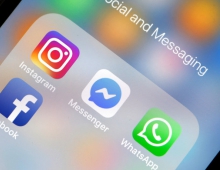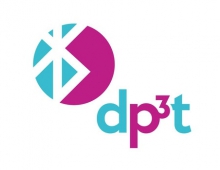
Coronavirus Data-sharing is Useful, But Puts Privacy on Risk
The pandemic data-sharing puts pressure on privacy protections, with technology companies to share users's data with government officials in order to help them fight the spread of the coronavirus.
Google and Facebook have been collecting, for advertising purposes, huge volumes of data from websites and smart-phone apps like maps and weather services, which transmit signals about their owners’ location. This has been a "normal" case for most comsumers, who do not care about their privacy and easily trade it with convenience. This seems not to have changed during the coronavirus pndemic, although some companies have made a step futher and are stripping the data of personal identification markers, aggregate it, and provide it to researchers, public-health authorities and government agencies. By pinpointing the movements of individuals governments are able to controlling the pandemic’s spread and check whether people obey orders to stay home.
Some consumer advocates do fear that an emphasis on health over privacy could undermine the protection of civil liberties. The familiar scenario happened after 9/11, when the U.S. secretly began collecting mass amounts of data on its own citizens in an effort to track down terrorists.
“There is an understandable desire to marshal all tools that are at our disposal to help confront the pandemic,” said Michael Kleinman, director of Amnesty International’s Silicon Valley Initiative. “Yet countries’ efforts to contain the virus must not be used as an excuse to create a greatly expanded and more intrusive digital surveillance system.”
In the U.S., researchers are collaborating with tech companies such as Facebook in ordr to get anonymous and aggregated geo-location data.
Researchers who’ve joined the Covid-19 Mobility Data Network are using mobile application data from digital ad companies sent by an analytics firm called Camber Systems in order to get insights about mobility rates. These rates are then shared with foreign governments like Italy and Spain and with U.S. states and cities, including New York, Seattle and California. The analysis is meant to help measure enforcement of social-distancing rules. The Covid-19 Mobility Data Network c;aims that the sata doesn’t contain personally identifiable information.
Facebook said its data are aggregated in formats that prevent re-identification of individuals and that scientists and other users are subject to licensing agreements.
Facebook, Google, Microsoft Corp., Amazon.com Inc. and others have pledged to work together in coordination with government to combat the spread of the virus.
Google has released data about how the pandemic has cut down on foot traffic to transit centers, retail stores and public parks in more than 130 countries. Google says that its mobility reports use anonymized, aggregated data.
Apple launched yet another initiative when it announced on March 27 that it was developing an app in partnership with the White House’s coronavirus task force, the CDC and the Federal Emergency Management Agency. The goal is to give the CDC guidance on users who input symptoms, risk factors and other information.
Democratic senators sent on Friday a letter asking what Apple was doing about privacy compliance, data retention, cybersecurity, and the terms of agreements with governments.
Privacy worries on whether the information collected will later be used in ways it wasn’t intended are still on the table. Although efforts that could help turn the tide in the crisis are respetable, asurances that the data are truly anonymous are required. But even anonymous data can sometimes be used by combining datasets. Even when made anonymous, location points that come from phone apps, for instance, can be linked to a person by checking who lives at the address where the phone rests at night.
In China, authorities used phone-carrier data to trace everyone who’s been in or near Hubei province, home to Wuhan, the epicenter of the outbreak. Singapore and Israel have also used tracking technology to trace the movements of coronavirus patients.





















